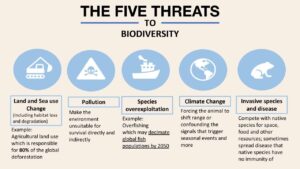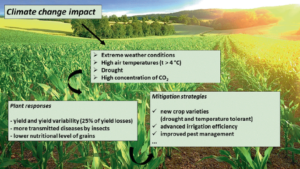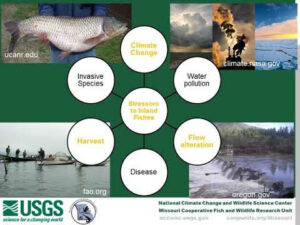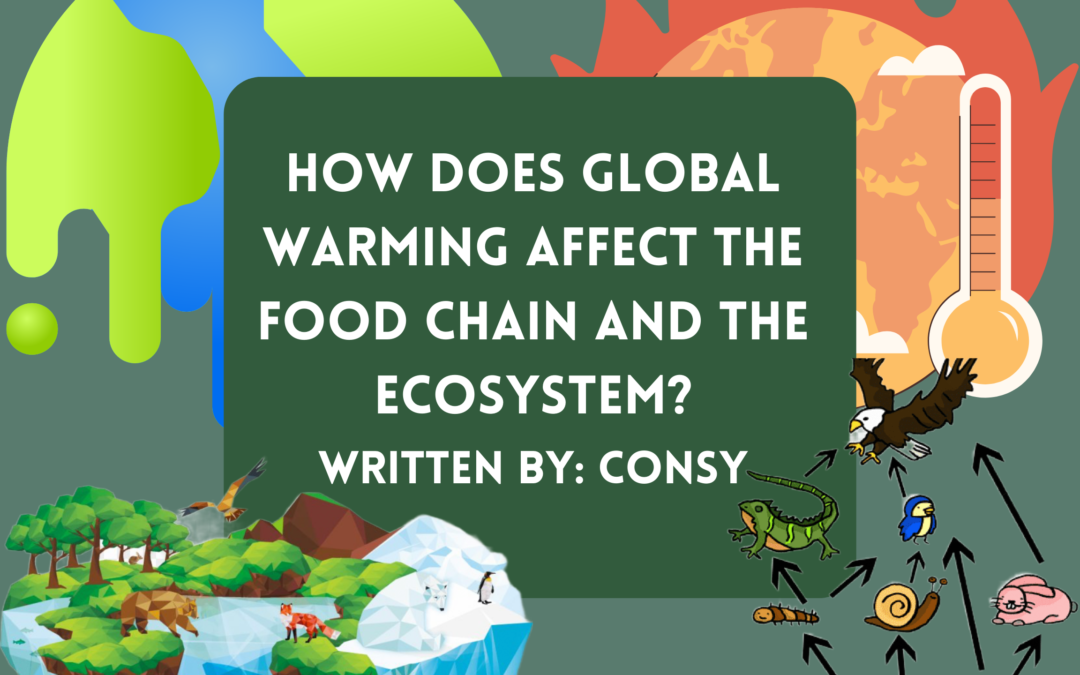Written by: Consy
Edited by: Maryam Nasser
Designed by: Fatima Khan
Published by: Kiritika Rana
Introduction to global warming and its impact on the food chain
What is global warming?
Global warming is like that annoying cousin who overstays their welcome at a family gathering. It’s the long-term increase in Earth’s average surface temperature caused by the build-up of greenhouse gases in the atmosphere. These gases trap heat from the sun like a cozy blanket, but in this case, it’s causing some serious problems.
The connection between global warming and the food chain
So, how does global warming mess with the food chain? Well, picture  a food chain as a really intricate game of Jenga. Each block represents a different species, from microscopic plankton all the way up to the mighty predators. If you start pulling out blocks too quickly, the whole tower comes crashing down. Global warming is that sneaky hand that keeps tugging at those blocks.
a food chain as a really intricate game of Jenga. Each block represents a different species, from microscopic plankton all the way up to the mighty predators. If you start pulling out blocks too quickly, the whole tower comes crashing down. Global warming is that sneaky hand that keeps tugging at those blocks.
Disruption of ecological balance: Effects on biodiversity and species extinction
How does global warming affect biodiversity?
Global warming is like a bully on the playground, pushing around biodiversity and making it feel small. With rising temperatures, many species struggle to adapt to the changing climate.  Ecosystems that rely on delicate relationships between different organisms are thrown out of whack. It’s like losing a puzzle piece, and suddenly the picture is incomplete.
Ecosystems that rely on delicate relationships between different organisms are thrown out of whack. It’s like losing a puzzle piece, and suddenly the picture is incomplete.
Threats to species survival and potential extinction
Global warming is playing a dangerous game of hide-and-seek with species survival. Rising temperatures and changing habitats make it harder for some animals to find food, reproduce, or simply survive. Think of it as trying to find a needle in a haystack, except the haystack is melting, and the needle is running out of time. Many species face the grim possibility of extinction, which is like losing a beloved character from your favorite TV show.
Threats to species survival and potential extinction
Global warming is playing a dangerous game of hide-and-seek with species survival. Rising temperatures and changing habitats make it harder for some animals to find food, reproduce, or simply survive. Think of it as trying to find a needle in a haystack, except the haystack is melting, and the needle is running out of time. Many species face the grim possibility of extinction, which is like losing a beloved character from your favorite TV show, except now with that individual gone, the show itself struggles to continue.
Changes in temperature and weather patterns: Impact on crop production and agriculture
Rising temperatures and their effects on crop growth
Global warming is turning up the heat on crop production, and not in a good way. Warmer temperatures can mess with plant development, making it harder for crops to grow, just like when you try to study in a sauna. It’s like Mother Nature cranked up the thermostat and forgot to give the plants a break.

Altered precipitation patterns and their influence on agriculture
Global warming loves to mess with the weather, and agriculture gets caught in the crossfire. Changing precipitation patterns mean that some regions get drenched in rain, while others turn into deserts. It’s like trying to plan a picnic when one minute it’s pouring cats and dogs, and the next minute it’s as dry as a desert. Farmers struggle to keep up with these unpredictable weather swings, and it can seriously impact food production.
Ocean acidification and its consequences for marine life and seafood supply
Understanding ocean acidification and its causes
Ocean acidification is like the hangover after a wild party. It happens when the ocean absorbs excessive carbon dioxide from the atmosphere, which makes it more acidic. This acidity can wreak havoc on marine life as the environment around them changes. It’s like throwing off the balance in a beautifully choreographed dance, and all the dancers stumble and fall.
Impacts on marine ecosystems and the fishery industry
Ocean acidification is like a bully that picks on the cool kids at school – the fishery industry and marine ecosystems. Shellfish, corals, and some fish species struggle to build their protective homes in this acidic environment. It’s like trying to build a sandcastle with lemon juice instead of water – not a pretty sight. This can have serious consequences for the seafood supply and the livelihoods of those who depend on it.

And there you have it, folks! Global warming’s impact on the food chain and ecosystem in a nutshell. It’s like a giant domino effect, where one small change can set off a chain reaction with devastating consequences. So let’s collectively put on our superhero capes and start fighting against global warming before it messes up the whole party. Let’s save the food chain and keep the ecosystem happy and healthy!
Citations
(2022, October 2). . – YouTube. Retrieved August 17, 2023, from https://www.bcg.com/capabilities/climate-change-sustainability/overview?utm_source=search&utm_medium=cpc&utm_campaign=climate&utm_description=paid&utm_topic=climate_sustainability&utm_geo=global&utm_content=climate_group_topreggeo&gclid=CjwKCAjwivemBhBhEiw
Global Warming 101 – Definition, Facts, Causes and Effects of Global Warming. (2016, March 11). NRDC. Retrieved August 17, 2023, from https://www.nrdc.org/stories/global-warming-101
Nicklen, P. (n.d.). Global warming and climate change effects: information and facts. National Geographic. Retrieved August 17, 2023, from https://www.nationalgeographic.com/environment/article/global-warming-effects
Webinar: Effects of Climate Change on Inland Fish and Fisheries. (2017, August 31). YouTube. Retrieved August 17, 2023, from https://www.youtube.com/watch?v=-m5BYLybkt4

